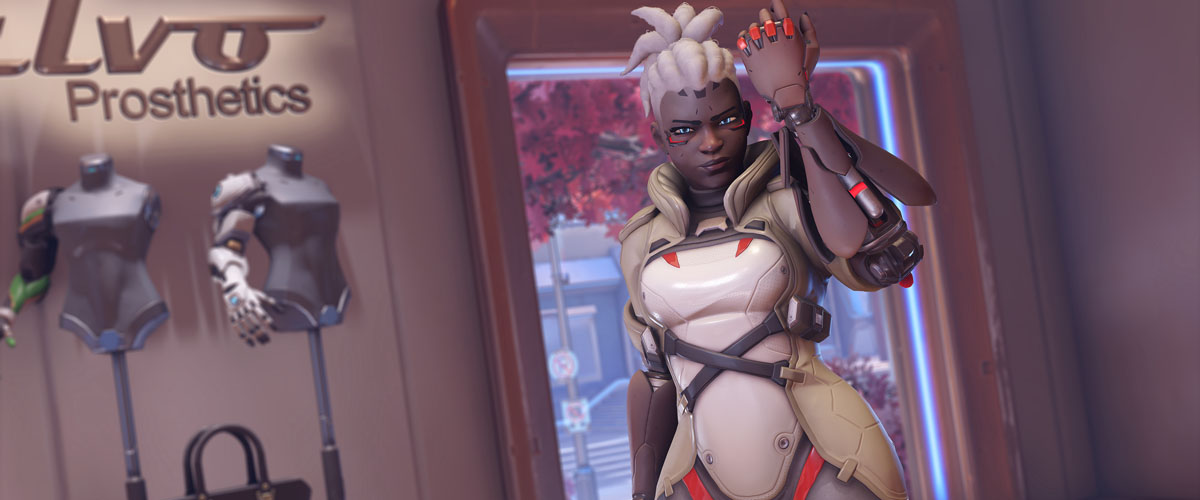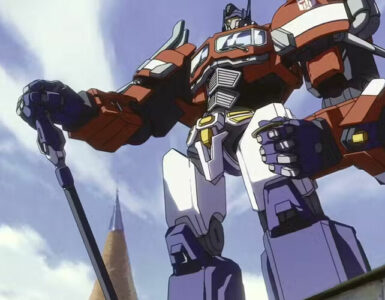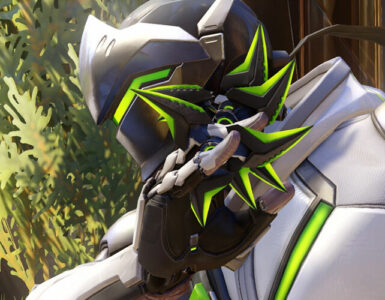Hectic activity and well-timed attacks are all part of the Overwatch experience. Between the agility of mobility-based heroes like Tracer and Genji, and steadfast tanks focusing on holding the fort, there’s plenty of movement-tracking and bustle to go around. Throw hero counters and team compositions into the mix, and there’s even more to take into consideration: with the right pick, teams can easily overwhelm their opponents, but sometimes, a difference in pure skill is all that’s needed to win the fight.

All of these experiences are set to carry over to Overwatch 2, which in the alpha build, appears to be on track with the continued spirit of hero shooters. In fact, the introduction of new elements – such as reduced team size, hero reworks, and the new damage hero Sojourn – means that players will have to adapt more readily to faster-paced gameplay, as well as a seemingly heavier reliance on communication and teamwork.
For starters, it’s nice to finally catch Vivan “Sojourn” Chase in action, whose development was first confirmed by former game director Jeff Kaplan in 2019. The result of this gestation now presents itself as the game’s first playable Black female character, with a dynamic play style that serves as a fresh breath of air, especially within the world of Overwatch.
Like her hitscan counterparts, Sojourn performs best with good and accurate aim. She wields a railgun, dishing out damage in the form of a rapid projectile that generates energy on hit and charges up her secondary fire. Barring the lack of weapon recoil, her firing patterns are most similar to that of Soldier 76’s, where players can either hold down left click to spray one entire clip, or tap quickly to fire in short bursts.

To increase the effectiveness of Sojourn’s railgun, her primary fire can be paired with the Disruptor Shot, an area-of-effect (AOE) tactical ability that slows enemies and eats away at their health. Rounding out her offensive capabilities is her ultimate ability, Overclock, which auto-charges her railgun for a short duration, and allows charged shots to pierce enemies. In the right hands, its effects will be utterly devastating.


What sets Sojourn apart, though, is her movement prowess. Bearing influences of the sliding mechanic in Respawn Entertainment’s Apex Legends, her play style ultilises a rocket-powered slide that can be cancelled into a high leap by jumping, which allows for easy repositioning. Coupled with the ability to fire while sliding, this creates room for players to pull off some cool maneuvers as such:

Putting all of that together makes Sojourn an enjoyable and delightful hero to play, though her aim-reliant design and high skill ceiling may be a challenge for those who are less accurate on the damage-dealing front. Individuals will also likely have to play around with the timing of her jumps and combine her skills to get the most out of her kit, but once things are in order, the mid-range experience proves to be a thrilling one.
Sojourn’s mobility puts her on equal footing with some of the most fleet-footed characters in Overwatch, so increased teamwork and communication are essential to counter her attacks. With the lack of a secondary tank to guard the frontlines, team members will have to band together and support one another more readily than before. The choice of tank matters a lot here – take Reinhardt for instance. Since the heavily-armoured man can no longer be protected by Zarya’s bubble, a reckless charge can easily result in painful deaths of not just the player, but the other members as well.
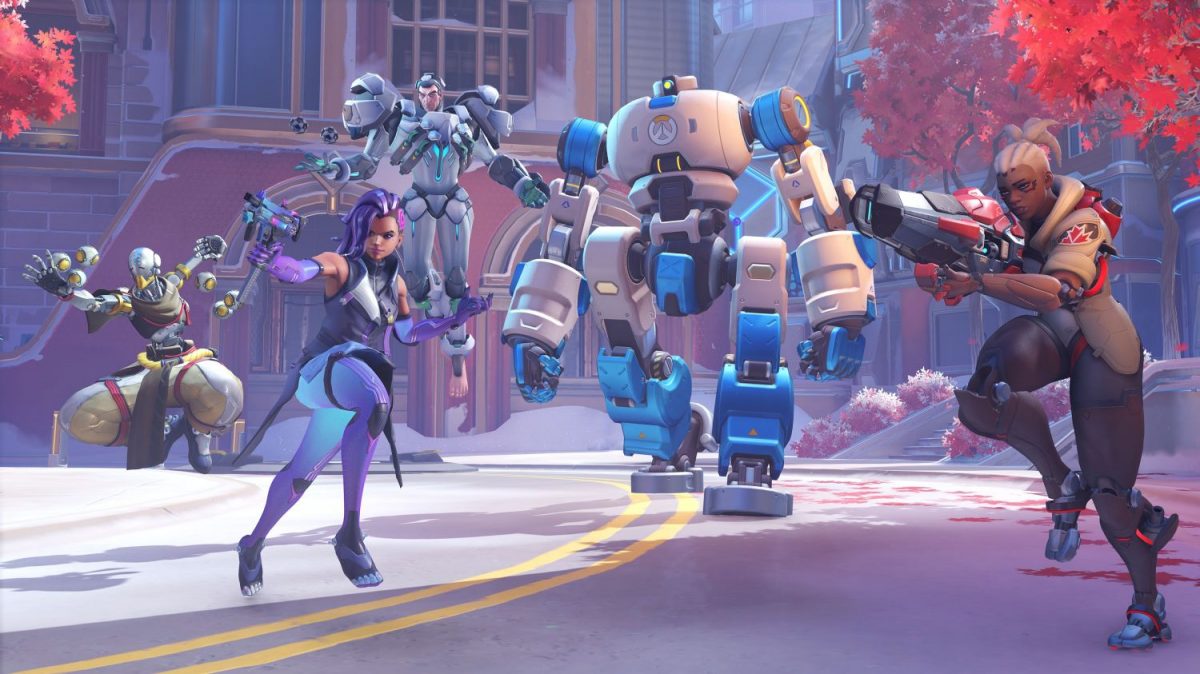
This tactical shift applies to other tanks as well. A flanking Wrecking Ball or D.Va would leave the backline vulnerable to flanking attacks or oncoming attacks, while an over-aggressive Roadhog might feed the enemy instead. The difference now is that there won’t be another tank to cover for these mistakes, which is a costly price to pay in the long run.
This over-reliance makes the five-per-side composition a little bit of a mixed bag. On one hand, it encourages more strategic thinking and faster-paced gameplay; on the other, the lack of tank dynamics takes away the charm that comes with playing the role. The five-kill Graviton-Bomb combo? The game-changing Shatter-Bomb devastation? No more of that excitement (though that’ll still stay in the current Overwatch).
The rework to Sombra doesn’t help the feeling of helplessness and oppression that tank players already feel, too. The Talon operative can now hack while invisible, which makes the life of a solo tank an absolute hell. This is where teamwork comes into the picture: while the tank does the heavy lifting, the rest of the team will have to keep a lookout for the sneaky damage dealer, and fend her off where possible. Her EMP remains a force to be reckoned with, but thankfully with Overwatch 2, the reliance on ultimate abilities is reduced, since they take much longer to charge up. Nonetheless, of all the hero reworks, she remains the most overpowered hero.
Bastion’s kit, likewise, has been modified. The gun-gatling omnic is able to move while in Sentry form with a 10-second cooldown, with its primary fire damage reduced to accommodate a higher falloff range. In place of the Self-Repair tactical ability is Tactical Grenade, which can bounce off of surfaces and stick to enemies, dealing explosive damage. Say goodbye, too, to turning into a tank: Bastion’s new ultimate brings forth the Artillery Strike, which allows players to drop three artillery shells from above anywhere on the map within a fixed time limit a la Doomfist’s Meteor Strike.
The changes to Bastion’s skillset made for a more positive gameplay experience during the alpha build, as there were a lot fewer encounters of the bunker and pirate ship compositions than expected (but the player pool was also significantly smaller, so it might not be an accurate gauge). Even if the opponent team ran them, the restrictions imposed on Bastion’s stationary form make the hero less of a threat.
Doomfist, reworked as a tank, boasts less mobility than before, but is sturdier with increased health (450 HP), and his Power Block ability that replaces Uppercut. The change grants him protection from frontal attacks, and empowers Rocket Punch with increased damage, speed, and reach. Coupled with the slowing effects from Meteor Strike and the new Seismic Slam, Doomfist continues to be a menace, proving effective against multiple enemies. He’s still annoying to go up against, even with Sombra being the perfect counter to him (which again, draws back to the issue of oppression with having only one tank). The loss of his mobility is lamentable, but it’s a necessary sacrifice to balance out his role switch.
On some level, the redesign does make some sense. With the reduction in crowd control abilities, his melee-based capabilities wouldn’t have fit into the gameplay model that the team is going for. Similarly, Orisa’s abilities have been tailored accordingly, and her revamped play style is, by far, a personal favourite.
Where the hero was previously more rooted in defensive play, there’s now more room for offensive capabilities. In place of Protective Barrier, Halt!, and Supercharger are Energy Javelin, Javelin Spin, and Terra Surge, which work in tandem to stun enemies, push them away, or sweep them in. This shift to a varied and aggressive approach makes Orisa a more viable and fun option than before, but that also raises concern regarding the lack of shields in Overwatch 2.
Thus far, Sigma and Reinhardt are the only tanks who can provide cover from oncoming fire, but even then, their shields cannot always hold up under pressure. Some tweaks might be needed here, and we’ll have to wait to see how that’d take off in future development.
Apart from these major changes, players can expect some other quality-of-life features, such as passive self-healing for all support characters (a big W for Ana, Baptiste, and Brigette players), as well as the extra use of tactical abilities. Fire Strike, for instance, can be used twice in succession before cooldown, while Zarya will be able to apply two shields at a time.
A new addition to Overwatch 2, the rehauled communication wheel proves to be an invaluable tool for shot calling and enemy tracking. The feature carries over extremely well to the game itself, and makes it easy for players to ping for assistance in the heat of battle. Saw a Reaper teleport to high ground? Ping. Harassed by a Genji in the backline? Ping. Want to inform teammates of your lookout areas? Ping. It’s all pretty fuss-free, and works well for the most part.
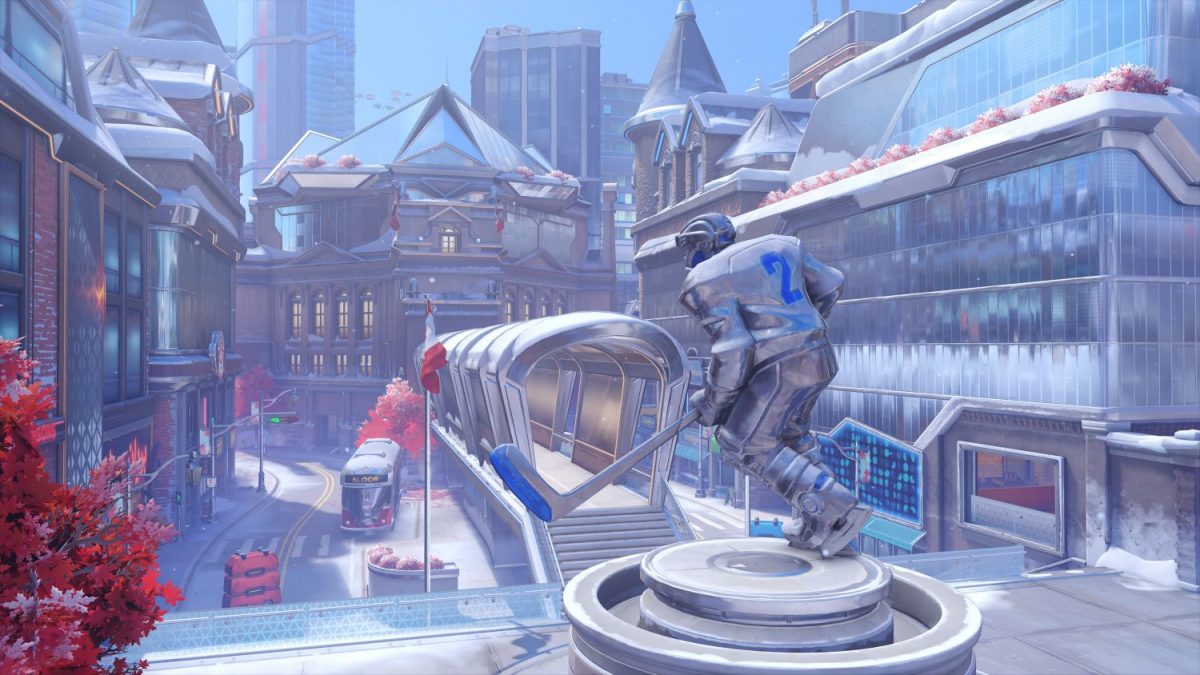
In usual Overwatch fashion, the new maps managed to impress with their attention to detail and scenic prowess. Similar to this alpha build, the open beta, which is releasing on 26 April, will bring four new maps into the existing list: Circuit Royal (Escort), Midtown (Hybrid), New Queen Street (Push), and Colosseo (Push). Of the list, we only got to try out the two Push maps, with both ushering in beautiful visuals and sneaky nods to potential Overwatch lore. There’s noticeably more cover this time around, taking the form of tall buildings and structures that break up the enemy’s line of sight. There’s a catch, however: the architectural interior offers several flanking routes, so players in the backline might want to pay attention to their six more often.

The Push mode, meanwhile, introduces a different dynamic to gameplay with its blend of the Payload and Control map elements. Here, teams have to stay close to the Push robot (who, by the way, is extremely cute-looking) and guide it to the designated points, but the process can be rather time-consuming, especially if they are evenly matched. The experience is reminiscent of the game’s previous five-round tiebreakers on Control maps, which causes exhaustion to set in after a while – an effect that’s exacerbated by the game’s colourful and cluttered visuals. Nonetheless, it presents an enjoyable alternative to the tedium of 2CP (2 Control Point) maps, which will be removed from Overwatch 2.

Of course, it should be noted this isn’t representative of the game’s final state, so things are pretty much open to change. The PvP experience in the alpha build isn’t entirely satisfactory, and leaves quite a bit of room for improvement, particularly for hero balance and reworks, but it’s enjoyable enough for players who want to revisit the world of Overwatch again. Without a look at the PvE elements, it doesn’t seem all that too different from the original game, and while that’s not necessarily a drawback, the series could do with a fresh breath of air, especially since the PvE segment would bring life back into the lore and worldbuilding that it was so lauded for in the first place. Till then, the beta build should help to tide over the wait a little.
The open beta for Overwatch 2 will go live on 26 April, with no release date announced for the game thus far.

